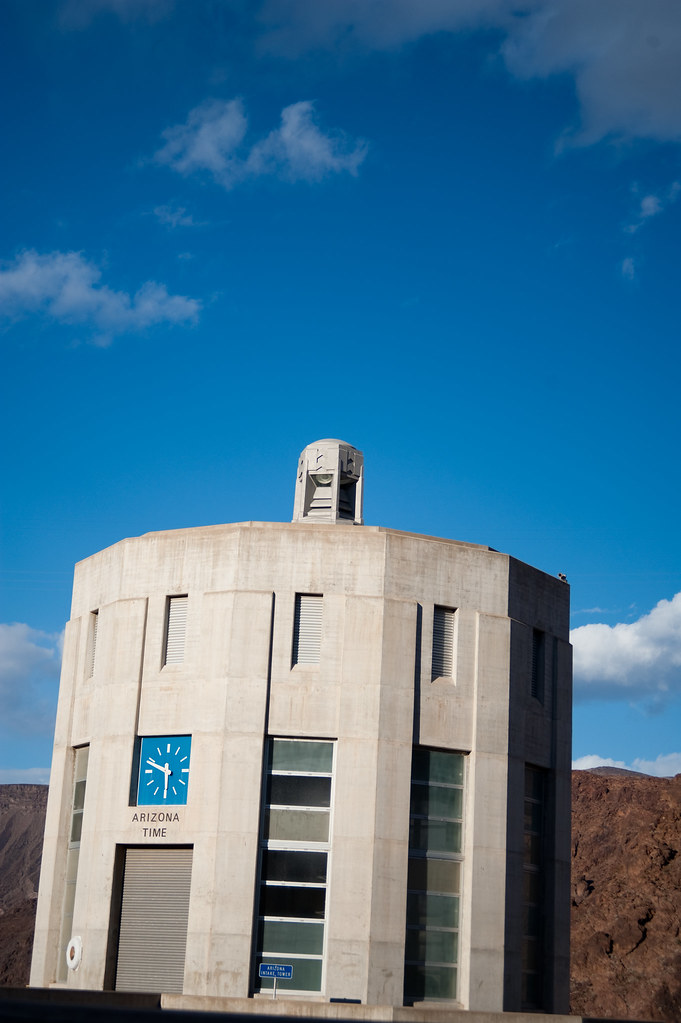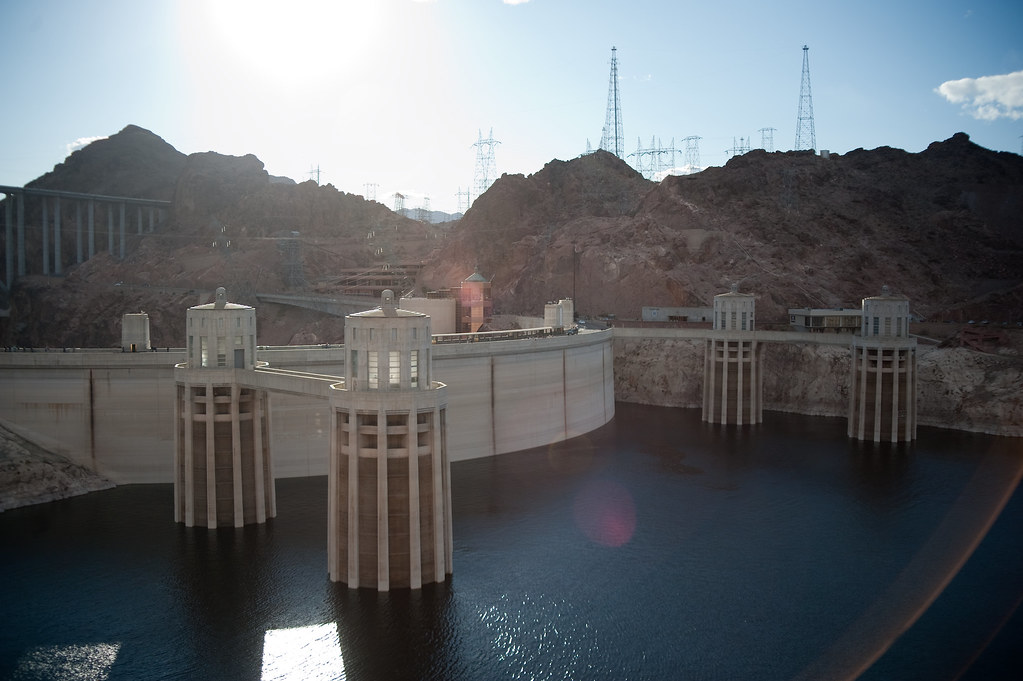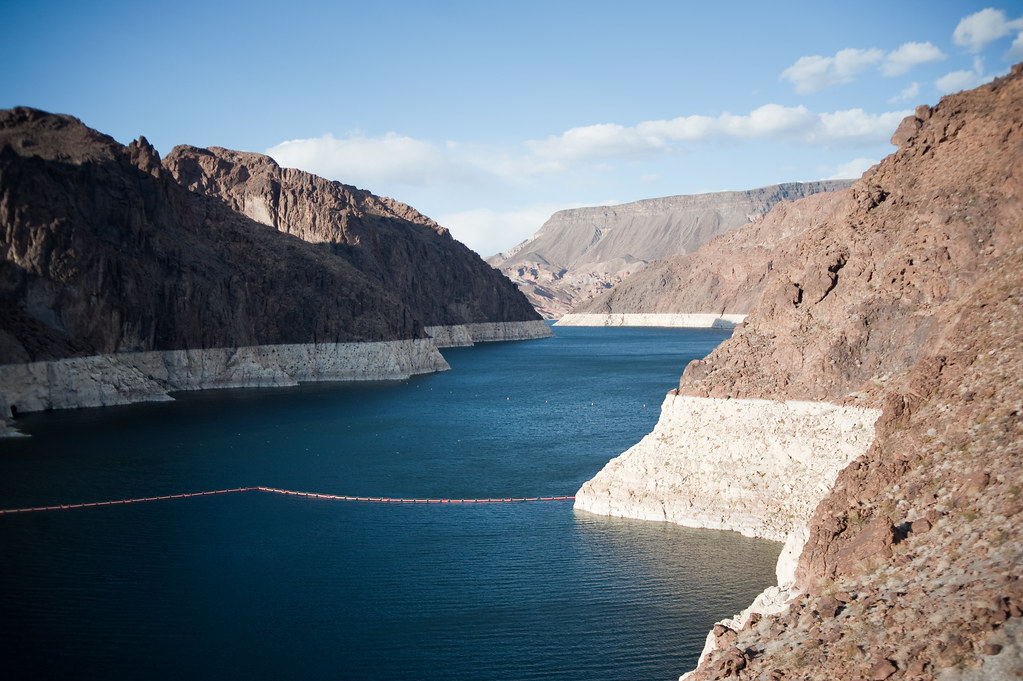I am the child of an engineer who built nuclear power plants (true confessions here) and the granddaughter of an engineer for Metropolitan Edison in PA. Thus, I've spent more time than your average citizen looking at power plants. So to visit one that is actually a tourist attraction and not just on the Leas family itinerary, was sort of interesting.
So first, your car may be inspected (or if it is late in the day and there are not a lot of cars, you will be inspected). That said, you are allowed to carry 1000 rounds of ammunition across the dam (no lie!).
A few interesting facts from the Bureau of Reclamation:
- The dam weighs 6,600,000 tons.
- The Hoover dam is a "concrete arch-gravity type, in which the water load is carried by both gravity action and horizontal arch action."
- The maximum water pressure at the base of the dam is 45,000 pounds per square foot.
- A total of 21,000 men worked on the dam with an average of 3,500 a day and a maximum of 5,218, which occurred in June 1934. The average monthly payroll was $500,000.
This was also my first visit to the Colorado River. I can't even count how many proposals or updates I've written for this river and I had never seen it! It is amazing how many places I've learned about through my work that I may never see.
The dam's effect on the river is pretty obvious. I'm not going to go into the pros and cons of large-capacity hydro power-- I'm just noting that the water level is obviously different.
Still, there is something oddly beautiful about this large, government-sponsored project that brings power to 1.3 million people (4 billion kilowatts a year!). When it was built, and until 1949, it was the largest hydroelectric installation in the world. It is still one of the largest in the U.S.
And the Hoover Dam is a nice example of pre-World War II Art Deco architecture. Originally the dam had been designed by the engineers that were assigned to build it, but apparently that design was a tad too utilitarian. So they asked Architect Gordon B. Kaufmann from Los Angeles to make revisions, which were mostly implemented. And Oskar Hansen won a national competition to design the dam's monument -- he created the seated, 30-foot tall, winged figures that I don't remember seeing, but our visit was short.





No comments:
Post a Comment